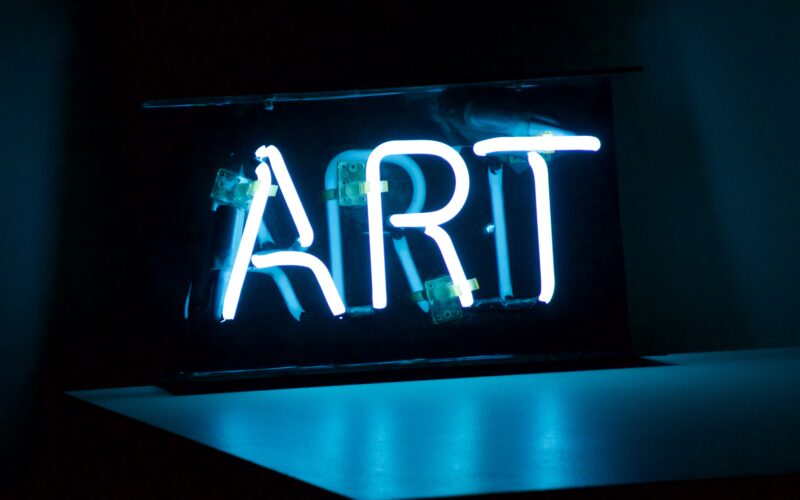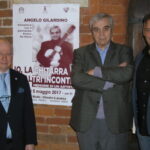Introduction
Art speaks not with words, yet it communicates with us, telling stories, evoking emotions, and stimulating reflections. It does so through a language of symbols, signs, colors, and shapes, which together create what we might call the “lexicon of art”. A fundamental aspect to consider is that this lexicon is not universal: each artist, each culture, each historical period has its own.
The Language of Art: Symbols, Signs, and Meanings
Art, like many other forms of human communication, has its own language. This language is not made of words, but of symbols, signs, colors, and shapes, which together create a network of meanings and references. Interpreting these signs and symbols requires an understanding of the cultural and historical context in which the work was created, as well as an awareness of the artist’s visual vocabulary.
For instance, a Renaissance painting may be filled with religious symbols that were clearly understandable to the audience of the time. A fruit in a painting might not just be a fruit, but a symbol of sin or redemption. A book could represent education or divine wisdom. However, without knowledge of these symbolic conventions, these meanings can easily elude the modern audience.
Similarly, contemporary art often draws from a very different visual vocabulary, one that may include images and references from pop culture, advertising, mass media, and technology. For example, an artist might use the image of a well-known consumer brand to explore themes of identity, consumerism, and globalization. Another might use montage or collage techniques to create critical commentary on modern society.
However, to fully appreciate these works, the audience must be able to “read” these images and understand their references. This may require a certain familiarity with the conventions and codes of pop culture and mass media, as well as an openness to the multiplicity of meanings that contemporary art often encourages.
In any case, interpreting art is never a passive or unidirectional activity. The audience brings their own experiences, knowledge, and biases, which can influence and enrich the interpretation of the work. Therefore, deciphering the language of art is an active and participatory process, inviting a continuous dialogue between the observer and the artwork.
The Renaissance and the Symbolism of Colors
The Renaissance, a period of great innovation and discovery in the realm of art and culture, was characterized by a rich and significant use of colors. These were not chosen at random or solely for their aesthetic value. On the contrary, they often held specific symbolic meanings that added another layer of interpretation to the artwork.
For example, blue was often associated with the Virgin Mary in a religious context, symbolizing her purity and virtue. This is evident in many paintings of the era, where Mary is frequently depicted wearing blue garments. Moreover, given the costliness of producing the color blue, its use also represented the preciousness of the subject portrayed.
Red, on the other hand, was traditionally linked to martyrdom and passion, and thus was frequently used in depictions of Christ or saintly martyrs. However, red could also symbolize power and authority, and therefore was also used in royal contexts.
Green was often connected to life, rebirth, and eternity, hence it was common in natural scenes or representations of spring. White and black had their meanings too: white generally symbolized purity and innocence, while black could represent death, mourning, but also humility and penance.
Similarly, many of the natural elements present in Renaissance artworks were rich in symbolism. The fly, for instance, is often a symbol of corruption, decay, and mortality, while the goldfinch is associated with suffering and redemption, linked to the Passion of Christ.
Some natural symbols had a meaning connected to the cycle of life and death. The dandelion, with its seeds dispersing in the wind, symbolized the transience and fragility of life, but also rebirth and resurrection.
Myrtle, a plant associated with the goddess Venus, is a symbol of love and fertility. Its use in artworks can evoke themes of love and beauty.
It’s important to note that these meanings were not rigid or universal, but could vary depending on the context, region, and artist. However, knowing and understanding this symbolism can greatly enrich the experience of viewing a Renaissance artwork, revealing layers of meaning that might otherwise remain hidden.
Despite this, understanding the symbolism of colors and other elements is not the only tool for interpreting Renaissance art. Each work is a complex assembly of symbols, historical and cultural references, artistic techniques, and personal choices of the artist, all converging to construct its overall meaning.
Pop Art: An Art that Speaks of Consumption and Society
In the 1950s, with the birth of Pop Art, there was a revolution in the perception of what is considered art. This artistic movement is distinguished for having brought to the public’s attention artworks that reflect the consumer society. Representations of everyday objects, advertising, and comics were brought to canvas, dismantling the traditional separation between “high” and “low” culture.
Pop Art emerged in a period of great social and cultural change. The post-war era had seen an exponential growth of the economy, the expansion of mass media, and the homogenization of global culture. In this context, artists like Andy Warhol and Roy Lichtenstein wanted to create art that reflected everyday life and the concerns of ordinary people, using themes and images directly taken from popular culture.
Andy Warhol, for example, is known for his silkscreens depicting mass consumer products and pop culture celebrities, like Campbell’s soup cans and Marilyn Monroe. These works not only portray familiar objects and people but also question the role of art and its value in a consumer society. Warhol, in fact, produced his works in series, just like mass consumer goods, challenging the idea of the originality and uniqueness of the artwork.
Roy Lichtenstein, on the other hand, is famous for his works that mimic the style of comic books, using the technique of Ben-Day dots. Through his art, Lichtenstein explored the relationship between mass culture, media, and society, highlighting the way mass media can influence the perception of reality.
In conclusion, Pop Art represented an artistic response to post-war consumerism and mass culture. Through the use of popular and everyday images, Pop Art artists gave visual form to the cultural landscape of their time, providing critical commentary on contemporary society.
Contemporary Art and the Enigma of Interpretation
Contemporary art may seem like an enigma wrapped in a mystery to many. It is distinguished by the heterogeneity of languages, the complexity of forms, and the variety of contents and meanings. Unlike more traditional forms of art, contemporary art does not limit itself to mimetically or symbolically representing reality but often questions reality itself, challenging aesthetic and cultural conventions.
Contemporary art can seem disconcerting or incomprehensible, especially when it challenges our expectations of what art is and what its purpose should be. It might not have a ‘definitive’ answer or a single, closed meaning. Instead, it opens a dialogue, a series of questions, reflections, explorations. This is because contemporary art tends to be conceptual, emphasizing ideas rather than pure technical skill or representational accuracy.
Thus, the key to approaching contemporary art is not so much trying to “understand” the work in a narrow and definitive sense, but rather learning to “read” the work, to explore its multiple layers of meaning, and to engage with it. This can mean reflecting on the context in which the work was created, on the artist’s intentions, on the techniques used, and on how these choices reflect in your personal encounter with the work.
Moreover, contemporary art often requires a sort of active participation from the viewer. It can invite reflection on social, political, or existential themes, or to engage in a more physical or interactive way. Some works may even change or evolve over time, in response to the actions or reactions of the audience.
In conclusion, contemporary art can be a challenge, but it also offers a unique opportunity to actively participate in the artistic process and to discover new perspectives. The best approach is to keep an open mind, be willing to question one’s preconceptions, and be ready to embark on a personal journey of discovery through the artwork.
Modern and Contemporary Art: An Undecipherable Enigma or a Mirror of the Times?
Many people look at modern and contemporary art with a certain perplexity, finding it difficult to understand or even inaccessible. Modern and contemporary artworks can seem elusive or cryptic, with their rejection of traditional techniques, their bold experimentation with forms and materials, and their frequent use of cultural and intellectual references.
However, these artworks are not indecipherable enigmas but rather mirrors of the times in which they were created. They reflect the anxieties, challenges, aspirations, and experiences of the modern and contemporary age. This includes everything from technological and social changes to wars and political conflicts, to issues of identity and human rights.
Modern art, born in the second half of the 19th century, represents a break with previous artistic conventions and an exploration of new ideas and techniques. This is reflected in movements such as Impressionism, which sought to capture the light and atmosphere of a moment, rather than fine and realistically precise details, or Cubism, which challenged traditional perspective and presented subjects from multiple viewpoints simultaneously.
Contemporary art, from the 20th century onwards, continues to push the boundaries of what can be considered art. This can be seen in works that use new media and technologies, such as video art and digital installations, or that challenge traditional audience expectations, such as conceptual art or performance art.
Ultimately, modern and contemporary art is not so much an enigma to be deciphered as a mirror in which we can see our society, our times, and ourselves reflected. The best approach to understanding these works of art is not to look for a single “answer” or definitive meaning, but rather to try to understand the context in which the work was created and how it responds or relates to that context.
Conclusion
Finally, it must be considered that art is not a monologue, but a dialogue. Our interpretation, our emotional reaction, our personal experience are an integral part of the work’s meaning. Here, then, are some guidelines for approaching art with a curious and open attitude: know the context, be aware of your subjectivity, pay attention to details, leave room for emotion, and above all, enjoy the journey.












